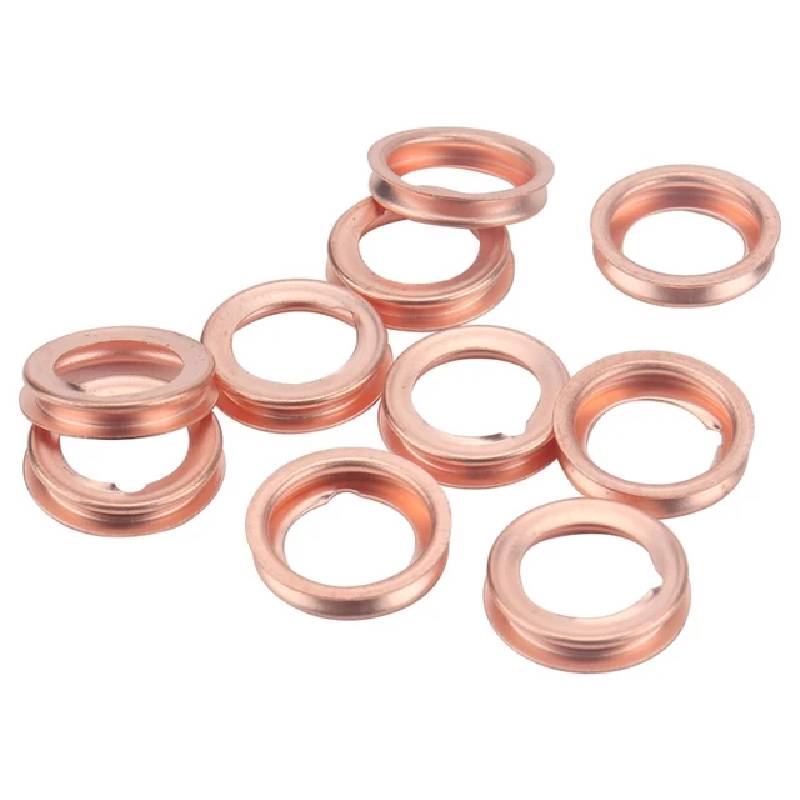Exploring the Importance of Seal Rings in Enhancing Mechanical Performance and Reliability
Understanding the Importance of Seal Rings in Mechanical Applications
Seal rings are essential components in various mechanical systems, serving a critical role in preventing leaks and maintaining the integrity of machinery. Commonly found in engines, pumps, compressors, and other equipment, seal rings contribute significantly to operational efficiency, safety, and longevity of mechanical devices. This article will delve into the types, functions, materials, and applications of seal rings, highlighting their importance in the engineering field.
Types of Seal Rings
Seal rings come in various designs suited for specific applications. The two primary types are static seals and dynamic seals. Static seals don't move relative to the surfaces they seal and are typically used in applications where two surfaces are joined together, such as pipe connections. Dynamic seals, on the other hand, are used in situations where there is relative motion, such as in rotating shafts or reciprocating pistons. Examples include O-rings, lip seals, and V-rings.
O-rings, made from elastomeric materials, are circular in shape and can effectively seal both static and dynamic applications. Lip seals utilize a flexible lip that makes contact with the surface to prevent fluid leaks, while V-rings are designed to protect against external contamination and retain internal lubricants.
Functions of Seal Rings
The primary function of seal rings is to create a barrier that prevents the passage of fluids or gases. This is crucial in systems where pressure differentials exist, as even a small leak can lead to significant operational issues, including loss of efficiency, contamination of the working fluid, and potential safety hazards. Furthermore, seal rings also help maintain the appropriate levels of lubrication in machinery, which is vital for reducing friction and wear.
In addition to leakage prevention, seal rings also serve to keep contaminants out of sensitive areas. Dust, dirt, and moisture can adversely affect the performance of mechanical systems. By effectively sealing these components, seal rings help prolong the lifespan and reliability of machinery.
seal ring

Materials Used in Seal Rings
Seal rings are made from a variety of materials, each chosen based on the specific requirements of the application. Common materials include rubber, silicone, fluoropolymer, and metal. Rubber seal rings are versatile and can withstand a range of temperatures and pressures, making them ideal for most applications. Silicone, known for its high-temperature resistance, is often used in environments where standard rubber might fail.
Fluoropolymer materials, although more expensive, provide excellent resistance to chemicals, high temperatures, and pressure, making them suitable for harsh environments. Metal seal rings are frequently used in high-performance applications because they offer superior strength and durability.
Applications of Seal Rings
Seal rings are used across a wide variety of industries, including automotive, aerospace, oil and gas, and manufacturing. In the automotive industry, they are crucial for ensuring engine seals function correctly, preventing oil leaks and maintaining engine temperature. In aerospace applications, seal rings must withstand extreme conditions while ensuring the safety and integrity of aircraft systems.
The oil and gas industry relies heavily on seal rings to prevent leaks in high-pressure scenarios, ensuring both safety and efficiency. In manufacturing, seal rings are found in equipment such as pumps and compressors, where they maintain pressure and prevent the escape of fluids.
Conclusion
In conclusion, seal rings play a vital role in the integrity and efficiency of mechanical systems. Their ability to prevent leaks and protect equipment from contamination is indispensable in various industries. With advancements in materials and design, seal rings are becoming increasingly sophisticated, continuously improving their performance and reliability. As technology continues to evolve, the importance of these small yet significant components in maintaining operational efficiency will remain paramount. Understanding and utilizing the right type of seal ring can lead to enhanced performance, reduced downtime, and increased safety in mechanical systems.
-
Understanding the Importance of the Crankshaft Oil Seal in Engine Performance
News Jun.16,2025
-
The Unsung Heroes of Engine Protection: Understanding Automotive Shaft Seals and Oil Seals
News Jun.16,2025
-
Keeping the Engine Tight: The Role of Crankshaft Seals and Gaskets in Oil Control
News Jun.16,2025
-
Complete Protection in Harsh Conditions: A Deep Dive into Cassette Seals
News Jun.16,2025
-
Choosing the Right Oil Seal: A Guide to Trusted Brands and Suppliers
News Jun.16,2025
-
Advanced Sealing Technologies: Exploring the Range of Modern Oil Seals
News Jun.16,2025
-
Your Essential Guide to Car Repair Kits: From Rust to Dings
News Jun.13,2025
Products categories















